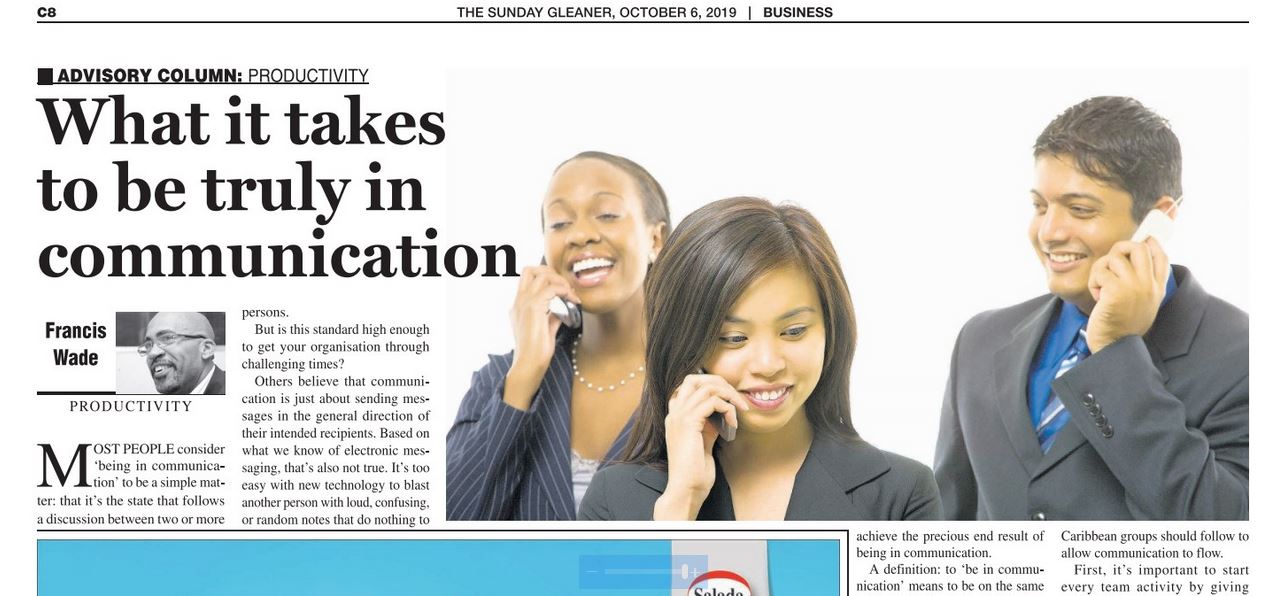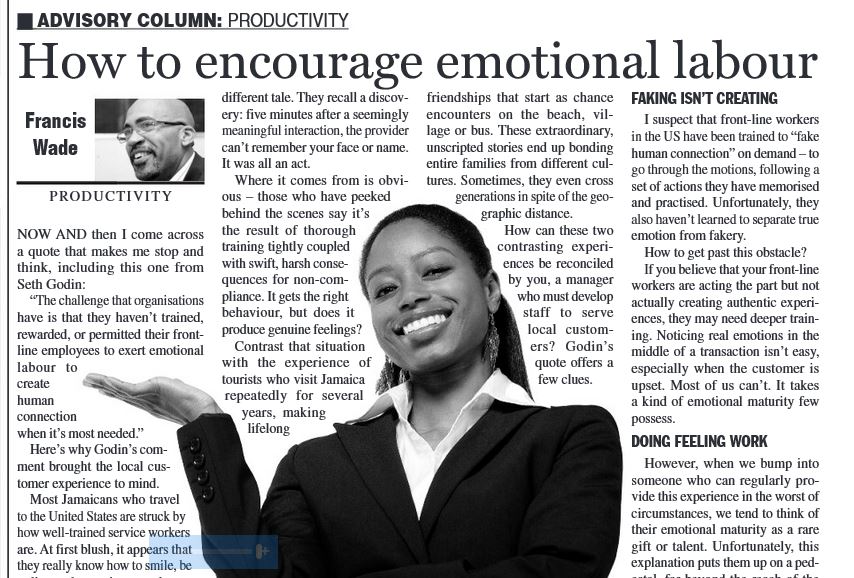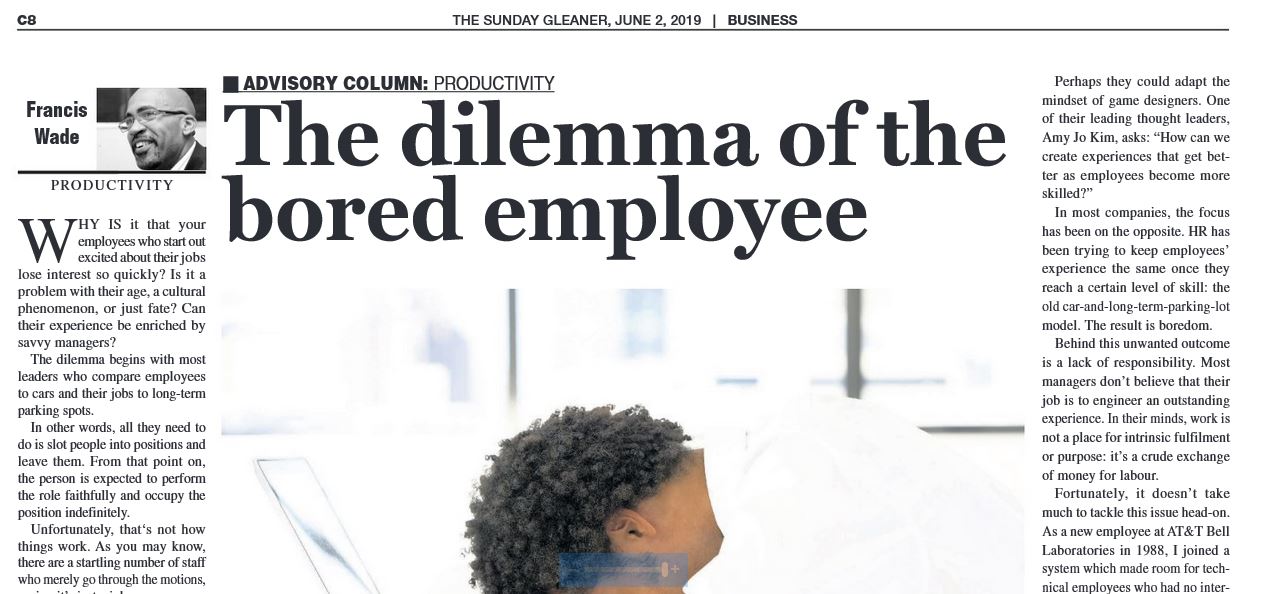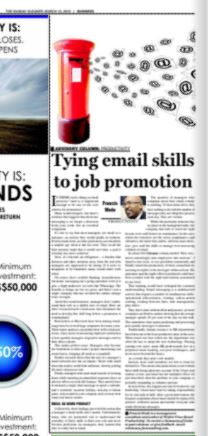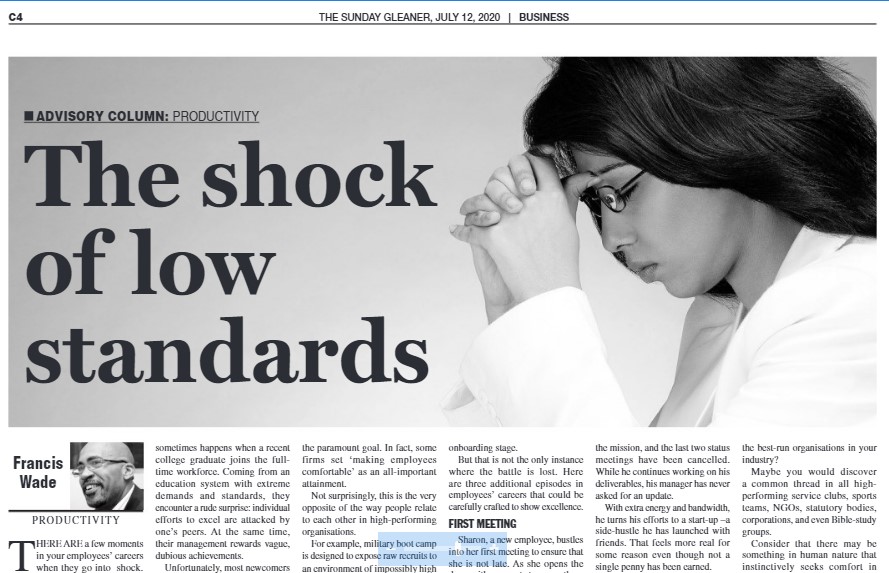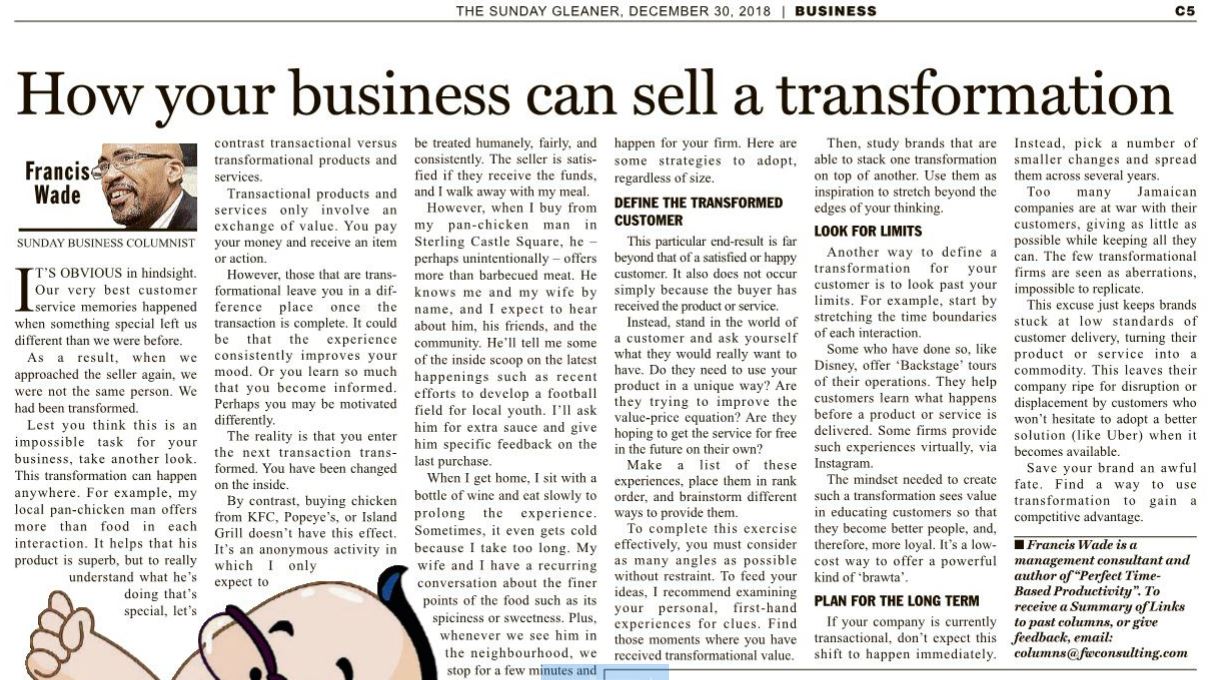Most people consider the phenomenon of “being in communication” to be a simple matter: it’s the state which follows a discussion between two or more persons. But is this standard high enough to get your organization through challenging times?
Others believe that communication is just about sending messages in the general direction of their intended recipients. Based on what we know of electronic messaging, that’s also not true. It’s too easy with new technology to blast another person with loud, confusing or random notes that do nothing to achieve the precious end-result of “being in communication”.
A definition: to “be in communication” means to be on the same page as others. People are together and in sync, achieving a high level of cohesion. A large frequency of authentic conversations occur which put prior issues to bed.Take a look at working groups in your office. Sometimes, the least effective ones are stuck with a list of matters which cannot be discussed. The breakdown in communication inevitably drags down performance, making it hard to complete the simplest of tasks.
Given these realities, what should leaders do to bring about a new level of communication to their organizations?
1. Understand that Being in Sync Is Unnatural
Functional teams are an aberration. Getting people to work well together is always going to be an ongoing, uphill challenge. Why?
To explain, it’s somewhat abnormal for a group of individuals to “be in communication”. If anything, our survival instinct leads us to scan our world for threats. We have a natural, inherited suspicion.
This invisible vigilance treats vulnerability and openness as weaknesses to be shunned. In other words, our very nature constantly pushes us out of communication with each other and ruins teamwork. Unfortunately, these are the very traits that teams need to bring into reality in order to “be in communication.” Just take a look around. Most people would rather stick to themselves and share as little as possible with others. In spite of this challenge, too many managers prefer to effect a level of casual nonchalance in their working groups which makes things fun and easy in the beginning, but causes havoc when the going gets tough. Instead, the best leaders don’t let their guard down.
Fully aware that mediocrity is always at the door trying to sneak in, they prepare themselves to communicate in group settings in a focused, intense way. Others react by calling them anal. But they persist, insisting that certain processes be followed by every high-performing team they sit on, bar none.
What are some disciplines your leaders can implement to ensure quality teams operate from the same page?
2. Tune into Group-Based Routines Which Work
Here is a process Caribbean groups should follow to allow communication to flow. First, it’s important to start every team activity by giving people an opportunity to connect. Once that requirement is satisfied, the approach is the same as that used in other countries: define the purpose of the gathering, the agenda / steps to be followed and the logistics which must be in place. (I was taught to use PAL – Purpose, Agenda and Logistics.)
When this formula is adopted, “being in communication” becomes easier to accomplish because the team’s core activities are already being managed in the background. In other words, taking care of the basics yields added bandwidth. It can be applied to the careful speaking and keen listening required to get on the same page and stay in communication.
3. Tune into the Group’s Connections
When humans aren’t working closely together, but should be, some surprising behaviors manifest. For example, they may start blaming each other for what appears to be minor matters. This sometimes escalates into name-calling and even acts of verbal violence – “Bad Mind”.
As a leader, you must be hyper-aware of these small gaps before they become major issues. Often, all that’s needed is an insistence that people talk to each other, rather than rely on electronic channels. However, in extreme cases, you may need to intervene with outside help.
Therefore, it’s essential to learn how to tune into and monitor the degree to which individuals in your team are in communication with each other. Call this a kind of ESP if you will, an ability to tap into intangible, emotional data that your inner self serves up. Most of the time we ignore these private urgings, but a leader should never do so.
The success of your enterprise may rely on the accomplishment of difficult goals. They won’t happen without the deep cohesion that brings people together on the same page. It’s a phenomenon which most leaders must consciously will into existence or it just won’t happen.

